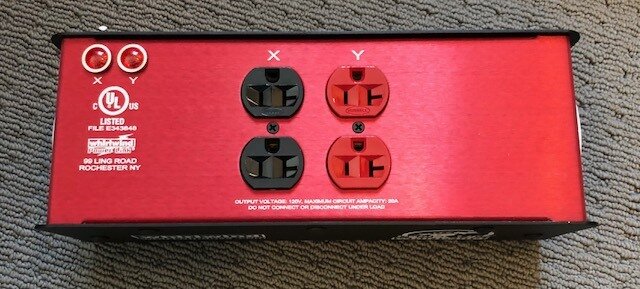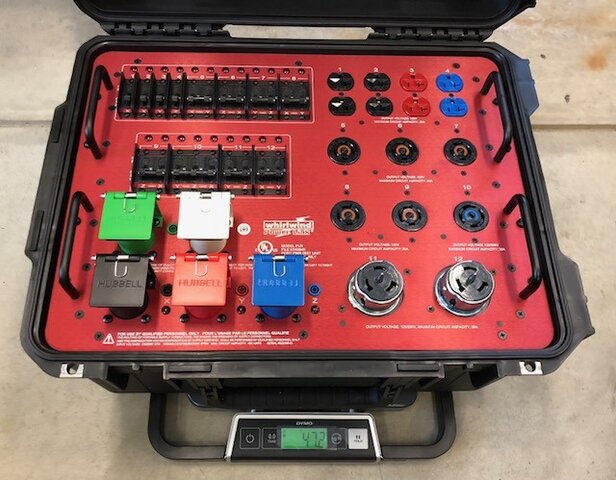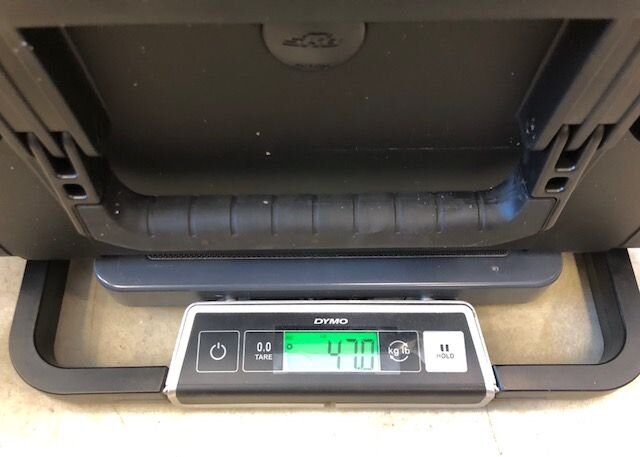Additionally, full blackout offers the longest lamp life and best energy efficiency. It’s a good idea to run your show at this setting as much as possible.@JonCarter "The ONLY TIME"? What about when you fade down to your total black out? C'mon at Jon, you know it'd be mere seconds before our proudly self-professed "Resident Curmudgeon" @derekleffew called you out for your all encompassing, sweeping, generalization.
@derekleffew , are you O.K. lad??
Toodleoo!
Ron Hebbard.
You are using an out of date browser. It may not display this or other websites correctly.
You should upgrade or use an alternative browser.
You should upgrade or use an alternative browser.
Using 208v with rogue LEDs
- Thread starterkoimystic
- Start date
@TJCornish @egilson1 Also reduces air conditioning loads and Centravac operational costs as well. Almost nothing but benefits.Additionally, full blackout offers the longest lamp life and best energy efficiency. It’s a good idea to run your show at this setting as much as possible.
Of course there'd be the cost of all the glow tape Equity would demand.
Toodleoo!
Ron Hebbard.
This can be solved by locking the doors before the audience, cast, and tech team are let into the theater.But than you raise your cost in batteries, needing to charge said glow tape with flashlights, but than you risk ruining that almost perfect black out....
For best efficiency, do it before the opening show of a venue, to see a life time of energy savings.This can be solved by locking the doors before the audience, cast, and tech team are let into the theater.
Basically I should have never asked this question if this is where the post ended up...
Jk! But this answers all my questions. Thanks everyone!
@TJCornish The idea of implementing L14-20 is a great idea. Our PD has a handful of L14-30 outs. I have seen many mass produced L14-30P to dual 5-20R adapters made. What is your stance on this? Is overloading say 12/3 and melting your wire the main concern here?
We have 100' sections of 10/4 cable with L14-30 connectors and will run that to say FOH and split it to two 20amp circuits. I've known this is technically allowing 10 amps excess but typlically all the cable is 10/4 and then it hits a quad box via 10/4 to 4 Nema 5-15R PER leg, so 8 120 outlets total of the initial L14-30.
Jk! But this answers all my questions. Thanks everyone!
@TJCornish The idea of implementing L14-20 is a great idea. Our PD has a handful of L14-30 outs. I have seen many mass produced L14-30P to dual 5-20R adapters made. What is your stance on this? Is overloading say 12/3 and melting your wire the main concern here?
We have 100' sections of 10/4 cable with L14-30 connectors and will run that to say FOH and split it to two 20amp circuits. I've known this is technically allowing 10 amps excess but typlically all the cable is 10/4 and then it hits a quad box via 10/4 to 4 Nema 5-15R PER leg, so 8 120 outlets total of the initial L14-30.
Basically I should have never asked this question if this is where the post ended up...
Jk! But this answers all my questions. Thanks everyone!
@TJCornish The idea of implementing L14-20 is a great idea. Our PD has a handful of L14-30 outs. I have seen many mass produced L14-30P to dual 5-20R adapters made. What is your stance on this? Is overloading say 12/3 and melting your wire the main concern here?
Hopefully you aren't seeing 'mass-produced' adapters - implying a factory-made part. I have no doubt shops wire up whatever is convenient, but it would be disturbing if these were actually manufactured on any significant scale.
My concerns from greatest to least are the following:
1. Killing/hurting someone
2A. Extreme property damage
2B. Extreme personal liability
3. Legality of the "solution" and risk of having the show inspected and shut down due to illegal wiring
4. Lame workmanship on the part of the company doing this.
We have 100' sections of 10/4 cable with L14-30 connectors and will run that to say FOH and split it to two 20amp circuits. I've known this is technically allowing 10 amps excess but typlically all the cable is 10/4 and then it hits a quad box via 10/4 to 4 Nema 5-15R PER leg, so 8 120 outlets total of the initial L14-30.
The rules are very clearly specified in the code:
- Receptacles must NEVER be fed from a supply greater than the receptacle's rating - e.g. a 20A regular circuit can't ever be run on a breaker of more than 20A (the exception is 15A receptacles can be fed from 20A breakers based on the assumption that there is demand diversity on the circuit but this doesn't really apply in professional power distribution)
- The purpose of the OCPD is to protect the DOWNSTREAM wiring as much as to protect the load (think starting a fire inside a wall). It is NEVER acceptable to put a circuit breaker larger than 20A on #12 portable cord.
- Expanding on the above, Any step-down in wire size and/or receptacle ampacity MUST be accompanied by OCPDs suitable for the new reduced downstream ampacity.
The above leaves no wiggle room for adapters as you are describing. You must use a stringer like this to break a L14-30 (or in the case of the linked product a L21-30) down into 5-20R receptacles.
DavidJones
Well-Known Member
......ahhhhhhhhhg!!!!! There is so much bad information in this thread, I don't even know where to begin. On Chauvet Rogues, feel free to use whatever voltage you like between 120 and 240v with the appropriate male connector. There is no need to change any fuses. I keep an inventory of Edison(5-15) connectors and L6-20. As for the rest of this thread, it's probably best just to pretend it does not exist.
Excuse me!? Your sweeping generalization is inaccurate and not appreciated.......ahhhhhhhhhg!!!!! There is so much bad information in this thread, I don't even know where to begin. On Chauvet Rogues, feel free to use whatever voltage you like between 120 and 240v with the appropriate male connector. There is no need to change any fuses. I keep an inventory of Edison(5-15) connectors and L6-20. As for the rest of this thread, it's probably best just to pretend it does not exist.
"......ahhhhhhhhhg!!!!! There is so much bad information in this thread, I don't even know where to begin."
Toodleoo!
Ron Hebbard.
@TJCornish @DavidJones Perhaps with encouragement, @DavidJones you might figure out where to begin?Excuse me!? Your sweeping generalization is inaccurate and not appreciated.
Toodleoo!
Ron Hebbard.
Similar threads
- Replies
- 3
- Views
- 1K
Vintage Lighting
Lightning Effect Version - A theory
- Replies
- 2
- Views
- 1K
- Replies
- 10
- Views
- 2K
Users who are viewing this thread
Total: 1 (members: 0, guests: 1)





